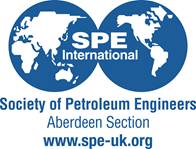 In the UK and North Sea alone, around 475 installations will eventually have to be decommissioned and the associated costs for the rest of this decade are expected to average at £1.3billion per year .
In the UK and North Sea alone, around 475 installations will eventually have to be decommissioned and the associated costs for the rest of this decade are expected to average at £1.3billion per year .
Accounting for a potential 40-50% of the cost of decommissioning an asset, well abandonment is an increasingly costly and complex activity to consider. Preparations must start early and in the North Sea, that time is already upon us.
This topic will be a key focus for the Society of Petroleum Engineers (SPE) on Tuesday, 21 April, as the Aberdeen Section hosts the 5th European Well Abandonment Seminar.
A number of major operators, service companies and industry bodies are set to highlight new and existing abandonment techniques and case studies, including Decom North Sea, GE Oil & Gas, Hess and Shell UK.
Ross Lowdon, chairman of SPE Aberdeen, said: "The number of decommissioning projects estimated for the future is the reason behind the rapid growth of the well abandonment sector, and this will only continue to increase.
"The North Sea is home to many leaders in modern well abandonment techniques and this forum is a hugely effective way for the industry to come together, sharing best practice and new technologies. In order to maximise efficiency whilst importantly keeping costs to a minimum and safety as priority, we must learn from the innovations of others."
This seminar will be of interest to anyone involved in, or planning for well abandonment across the drilling, completions, project, well integrity, environmental and commercial personnel disciplines.
Mr Lowdon continued: "I would urge anyone who is, or is likely to become involved in decommissioning to attend this event. We have an excellent programme of speakers who will cover some of the well abandonment industry's most pressing issues, which I am confident will stimulate conversation and collaboration."
New for this year is the pre-conference training day, 'An Overview on Well Abandonment'. This course will be presented by technical experts from Baker Hughes and Helix Well Ops and is a must-attend for anyone looking for an introduction or refresher on this specialist subject.
The pre-conference training day will take place on Monday, 20 April with the full seminar and exhibition following on Tuesday, 21 April. Both events will be hosted at the Aberdeen Exhibition and Conference Centre.
For seminar bookings, exhibition space and sponsorship opportunities, please visit www.spe-uk.org/aberdeen


 Responding to the industry's need for more guidance on procedures related to liquefied natural gas (LNG) bunkering, the US Coast Guard (USCG) has published two new Policy Letters on LNG Bunkering, Personnel Training and Waterfront Facilities. With regard to simultaneous operations (SIMOPS) USCG points to DNV GL's Recommended Practice for "Development and Operation of LNG Bunkering Facilities" for guidance.
Responding to the industry's need for more guidance on procedures related to liquefied natural gas (LNG) bunkering, the US Coast Guard (USCG) has published two new Policy Letters on LNG Bunkering, Personnel Training and Waterfront Facilities. With regard to simultaneous operations (SIMOPS) USCG points to DNV GL's Recommended Practice for "Development and Operation of LNG Bunkering Facilities" for guidance.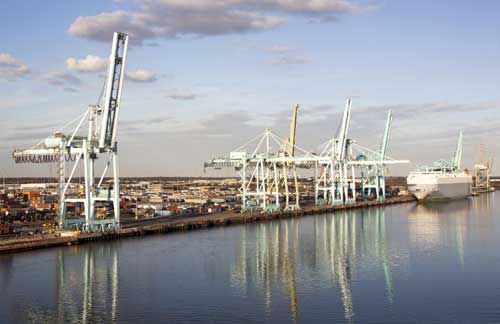 Since US ports do not have LNG liquefaction and storage facilities yet, ships will have to rely on small-scale bunkering for the time being. This practice harbors certain risks that had not been addressed by US legislation until now, but are covered in DNV GL's Recommended Practice RP-0006: 2014-01 on the Development and Operation of LNG bunkering. In 2013, DNV GL developed the Recommended Practice to help facilitate the development of an international LNG infrastructure while waiting for the final release of the ISO 18683 workgroup document on systems and installations for supply of LNG as fuel to ships. It was released on 15 January 2015 and builds on DNV GL's RP.
Since US ports do not have LNG liquefaction and storage facilities yet, ships will have to rely on small-scale bunkering for the time being. This practice harbors certain risks that had not been addressed by US legislation until now, but are covered in DNV GL's Recommended Practice RP-0006: 2014-01 on the Development and Operation of LNG bunkering. In 2013, DNV GL developed the Recommended Practice to help facilitate the development of an international LNG infrastructure while waiting for the final release of the ISO 18683 workgroup document on systems and installations for supply of LNG as fuel to ships. It was released on 15 January 2015 and builds on DNV GL's RP. VAALCO Energy, Inc
VAALCO Energy, Inc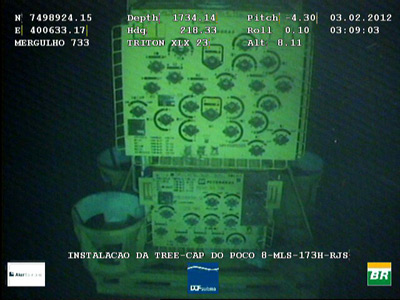
 In the UK and North Sea alone, around 475 installations will eventually have to be decommissioned and the associated costs for the rest of this decade are expected to average at £1.3billion per year .
In the UK and North Sea alone, around 475 installations will eventually have to be decommissioned and the associated costs for the rest of this decade are expected to average at £1.3billion per year . Statoil
Statoil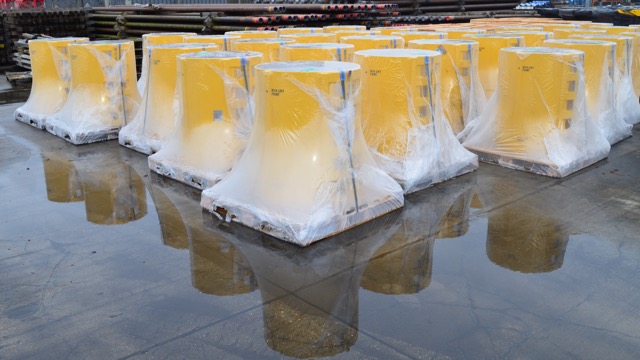 Claxton Engineering Services
Claxton Engineering Services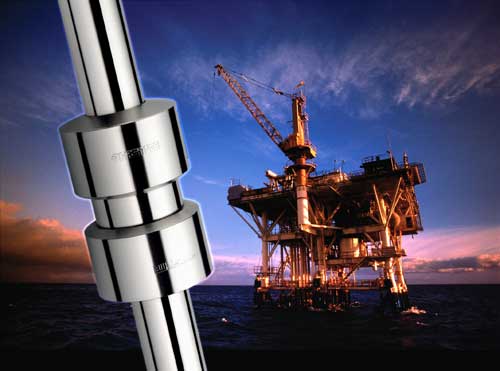 At OTC 2015,
At OTC 2015, 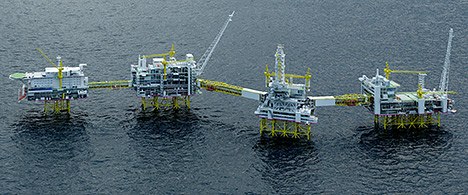
 Statoil Petroleum AS and Gassco AS have awarded the 2015 annual pipeline inspection contract to
Statoil Petroleum AS and Gassco AS have awarded the 2015 annual pipeline inspection contract to 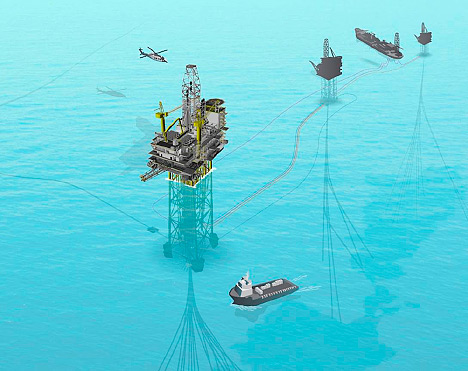 Phase II solution, with Platform C in the foreground.
Phase II solution, with Platform C in the foreground.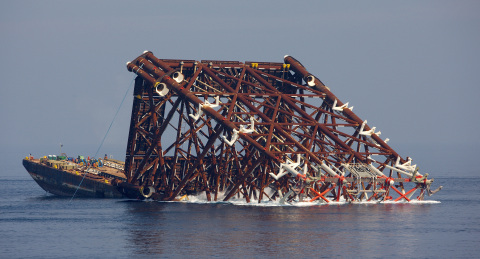 McDermott has successfully executed several offshore electrification projects for Saudi Aramco such as the one pictured. (Photo: Business Wire)
McDermott has successfully executed several offshore electrification projects for Saudi Aramco such as the one pictured. (Photo: Business Wire)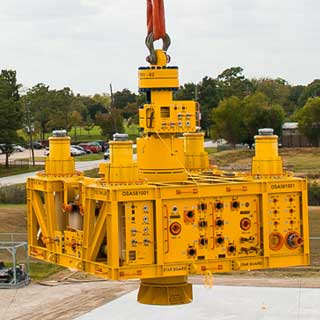 Aker Solutions
Aker Solutions 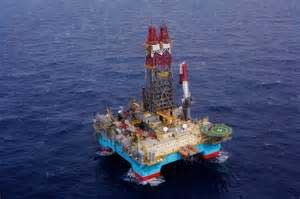 Maersk Discoverer
Maersk Discoverer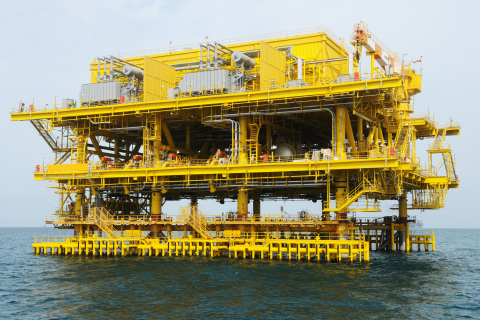 McDermott International, Inc.
McDermott International, Inc.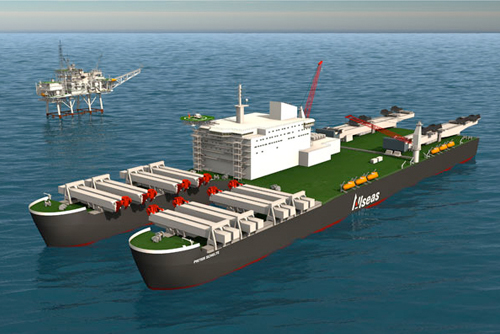
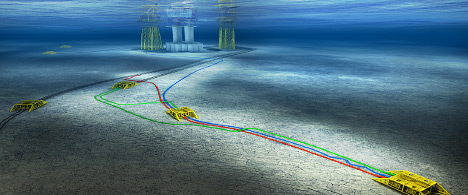 On 21 February
On 21 February